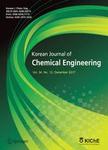版权所有:内蒙古大学图书馆 技术提供:维普资讯• 智图
内蒙古自治区呼和浩特市赛罕区大学西街235号 邮编: 010021

作者机构:Kyung Hee Univ Ctr Environm Studies Dept Environm Sci & Engn Coll Engn Suwon 446701 South Korea
出 版 物:《KOREAN JOURNAL OF CHEMICAL ENGINEERING》 (韩国化工杂志)
年 卷 期:2009年第26卷第4期
页 面:969-979页
核心收录:
学科分类:081704[工学-应用化学] 0817[工学-化学工程与技术] 08[工学] 0703[理学-化学]
基 金:Korean Government (MOEHRD) [KRF-2007-331-D00089] Seoul RBD Program [CS070160]
主 题:Bioinformatics Cancer Classification Clinical Outcome Hierarchical Framework Generative Topographic Mapping Microarray Gene Expression
摘 要:DNA microarray analysis of gene expression is useful for discriminating between the various subtypes of cancer, which is necessary for the accurate diagnosis and treatment of patients. Particularly, assigning biological samples into subclasses or obtaining detailed phenotypes is an important practical application for microarray gene expression profiles. In the present study, a hierarchical framework of a nonlinear mapping classification was developed for elucidating data and classifying multiclass cancers based on microarray data sets. This classification maps the gene expression profiles of multi-class cancers to the visualized latent space and predicts the clinical output through high-dimensional computational biology. The proposed method was used to interpret and analyze four leukemia subtypes from microarray data. The results demonstrate that, using a high-dimensional nonlinear mapping to extract biological insights from microarray data, the proposed method can identify leukemia subtypes on the basis of molecular-level monitoring and improve the interpretability of leukemia clinical outputs. Furthermore, this nonlinear mapping of cancer subtypes is used to establish a relationship between expression-based subclasses of leukemia tumors and leukemia patient treatment outcomes. The proposed method may be used to guide efficient and effective approaches for the treatment of leukemia subclasses.